Getting Ready for a New Block of Training
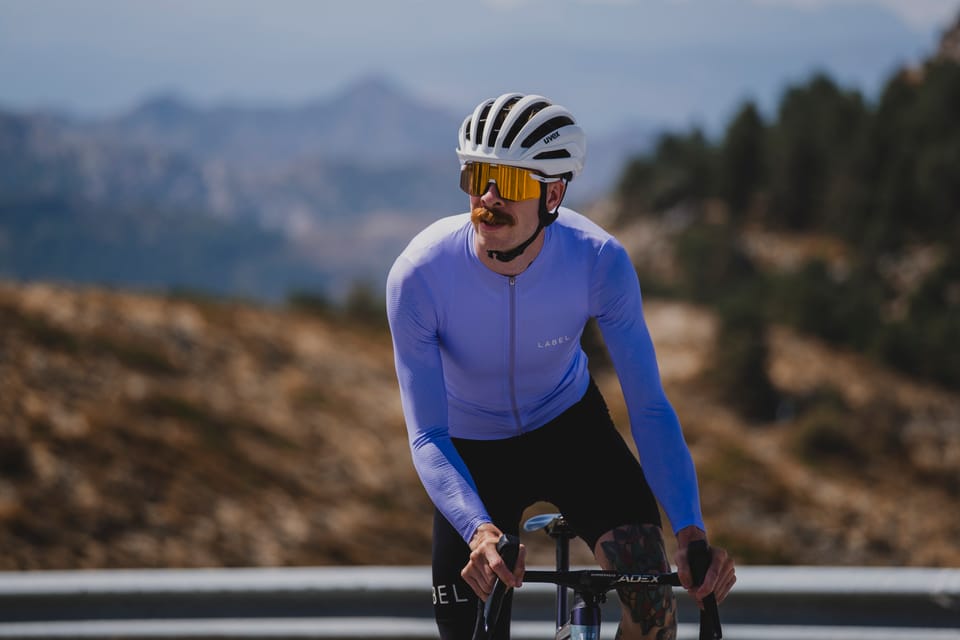
There’s a quiet excitement that comes before starting a new block of training. You know what’s coming — the long hours, the steady grind, the feeling of building something deeper. After a few weeks of lighter riding, it’s time to turn the focus up again.
This next phase is heavier, both in structure and intention. It’s centred on steady-state efforts to push my FTP up, and long endurance rides to build volume. It’s not the kind of block that brings quick rewards or fireworks on the bike. It’s the kind that slowly builds your engine until one day, holding power for long stretches just feels easier.
Resetting Before the Load
I gave myself an easy week before starting this one, I say easy but we did travel to Poland for work and I got ill and filled myself with goulash and pirogi.... Nothing special. I did a few realxed rides though to make sure i wasnt just going into things with nothing in the legs. The body needed to reset, but the mind it seemed like it needed a little more. Recovery often remind me how much energy focused training demands, not just physically but mentally. You have to be ready to put your head down again and trust the process.
Before any new phase, I go through a small ritual. I check my last training block: what worked, what didn’t, where I felt strong, and where I fell apart. I look back at the numbers — FTP, heart rate, weekly hours — but I also remember how the sessions felt. Did I dread them or enjoy them? Was I mentally sharp or just pushing through?
That reflection helps shape the next phase. This time, I realised I’ve been avoiding long steady efforts. I love shorter intervals, the rush of pushing power and feeling it burn, but I know that’s not what I need right now. The biggest gains often come from doing the boring work — the kind that doesn’t feel exciting but builds real strength.
The Focus: Steady-State Power
This block is all about steady-state efforts. Think 2x20 minutes or 3x15 minutes around 90–95% of FTP. The kind of sessions that demand focus and pacing, not aggression. You have to lock into a rhythm and hold it. It’s not about chasing a personal best; it’s about training the body to be comfortable being uncomfortable.
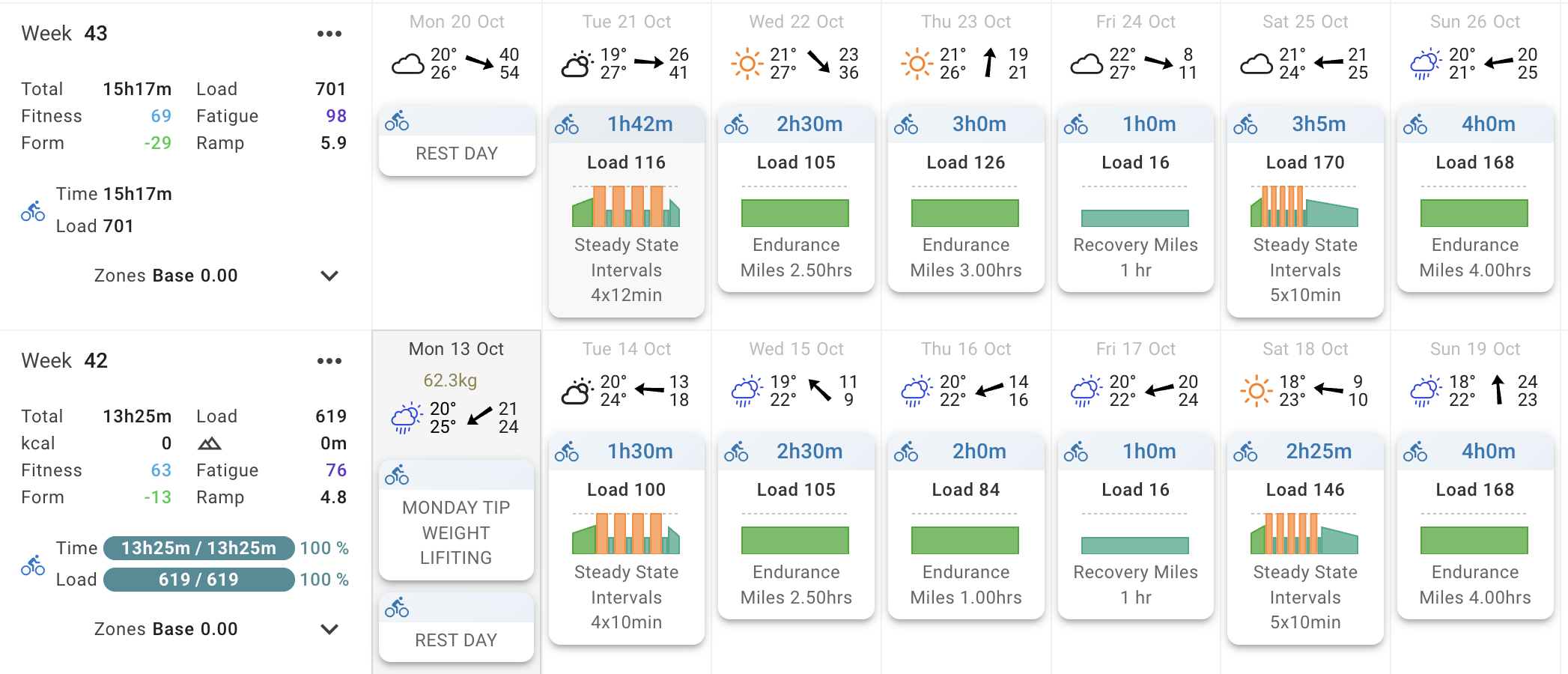
When you sit just below threshold for extended periods, your muscles adapt to clear lactate more efficiently. Your heart and lungs learn to deliver oxygen more effectively. Over time, your sustainable power rises, and you can hold higher speeds for longer.
I’ve learned that the key to these workouts isn’t hitting the perfect number, it’s holding form and control. When fatigue hits halfway through, it’s easy to overshoot or back off too much. The goal is to stay even, calm, consistent. That’s where the real training effect happens.
I also plan to keep cadence in the 85–95 range, depending on terrain. Lower cadence work helps build muscular endurance; slightly higher cadence trains efficiency. Switching between both keeps things balanced.
The Foundation: Endurance Volume
The second part of this block is endurance — long, steady rides that increase total training hours. These aren’t intense days, but they are essential. They build the aerobic foundation that supports everything else.
I’ll be doing weekend rides, around 4–6 hours, this ramps up over the 8 week block, so you start at 4 and it builds up to 6, these workouts also have max effort sprints in that ramp up in quantity as the block progresses. Fuelling well from the start is going to be my key focus for all of these. I always eat every 30 minutes, weather its putting down carb drink, a gel or pan de leche, even when I don’t feel hungry, you have to teach your body to handle nutrition efficiently.
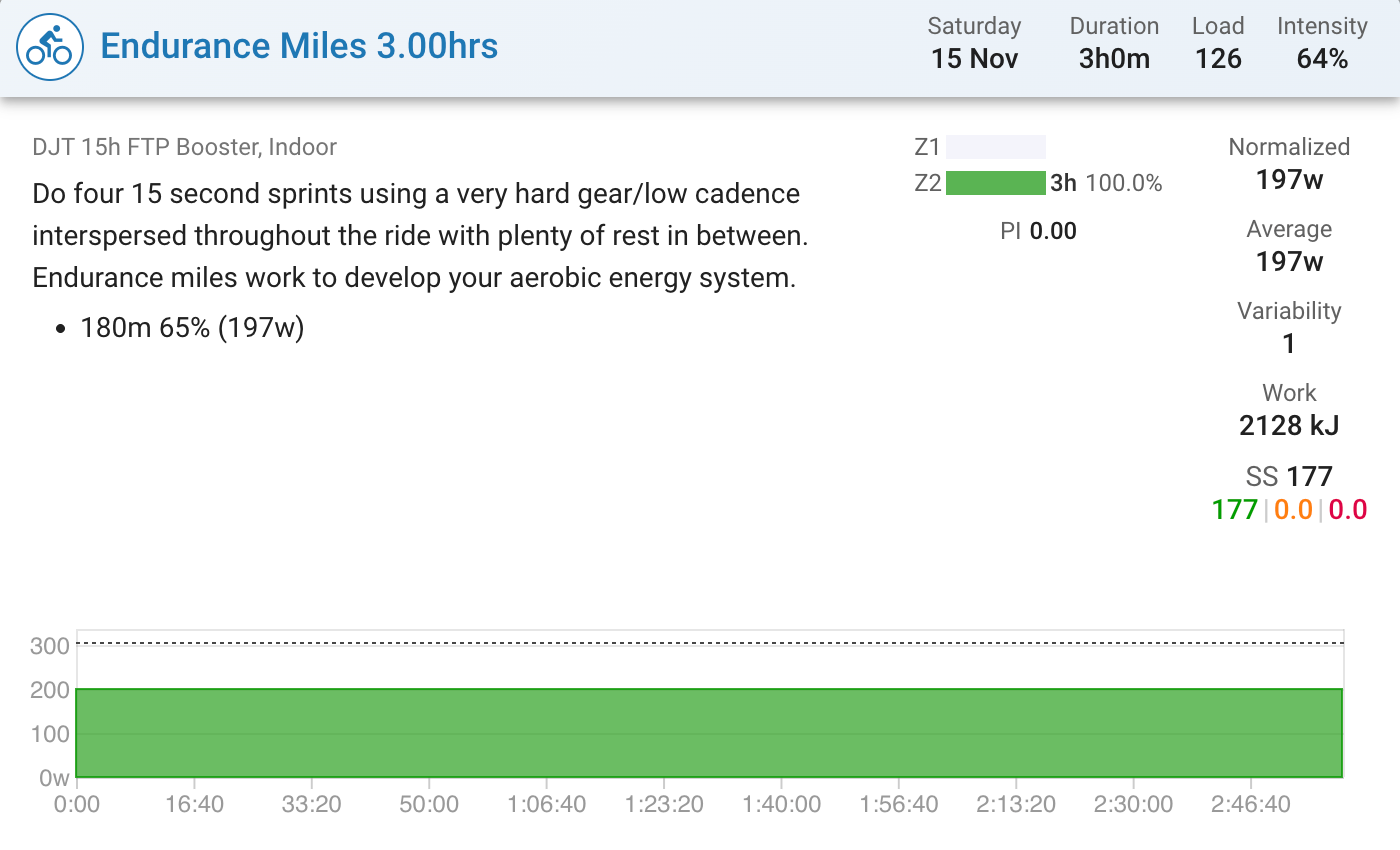
Endurance rides also help with mental conditioning. Spending hours on the bike forces you to find comfort in monotony. There’s something calming about it — the quiet repetition, the rhythm of pedalling, the slow progress that adds up. I often find my best ideas or moments of clarity during these rides.
Balancing Load and Recovery
A heavier block means more stress, so recovery becomes just as important as the sessions themselves. I track how my body reacts, usually my HRV is a good indicator (heart rate variability), resting heart rate, sleep quality. But I also listen to the simple signs: how I feel when I wake up, how my legs respond in the warm-up, how my motivation changes through the week.
If I start skipping warm-ups mentally or feeling flat on the bike, that’s a red flag. It means I’m accumulating fatigue faster than I can absorb it. I’d rather take an extra recovery day than push through and compromise the whole week.
Sleep is another non-negotiable. I’ve noticed that even an extra hour makes a difference in how well I recover between sessions. No supplement or gadget can replace that no matter what the gurus tell you.
Nutrition and Fuel Strategy
During heavier training phases, fuelling becomes critical. The goal is to support the load, not chase a calorie deficit. I increase carbs on hard days — rice, oats, pasta, bread, fruit — and keep protein steady for muscle repair. On rest days, I reduce portions slightly but still eat enough to stay recovered.
Before steady-state sessions, I usually start with a simple breakfast like oats with banana or toast with honey. Alongside it, I drink an Nduranz Carb Drink to top up glycogen stores and stay hydrated before the effort starts. It gives me a clean energy boost without the heavy feeling that comes from larger meals.
During training, I aim for around 60–80 grams of carbohydrates per hour. I rely on a mix of Nduranz gels and carb drinks, but I also make sure to include real food on longer rides. The gels are easy to digest and formulated with a glucose-to-fructose ratio that keeps energy stable without upsetting the stomach — something that’s been a game changer on hot or high-intensity days. But after a few hours, your body craves something more solid.
20%* off NDURANZ nutrition for your training, rides or racing. Whatever you need, its fuel that makes sense.
So I mix it up. Rice cakes, small sandwiches, oat bars, or fruit — things that bring variety and feel natural to eat. Combining real food with sports nutrition keeps digestion smoother and energy more stable over long hours. It also helps train the gut to handle different carb sources, which becomes important for longer events or back-to-back training days.
For rides over three hours, I often start with real food and switch to gels and drinks later in the session when the body needs faster absorption. That balance works best for me — it prevents energy dips while keeping nutrition enjoyable instead of mechanical.
Post-ride recovery starts as soon as I get off the bike. I usually have an Nduranz Recovery Shake within half an hour. The carb-to-protein ratio is well balanced, which helps replenish glycogen and supports muscle repair after steady-state or endurance sessions. I’ll then follow up with a proper meal — rice, vegetables, and a protein source — to complete recovery.
I’ve also added Nduranz Beta Alanine into my daily supplement routine during this block. It helps buffer lactic acid and supports endurance during longer steady-state intervals. Over time, it contributes to better durability in the legs — exactly what I’m trying to build with this training phase.
Working with Nduranz has taught me that fuelling isn’t about sticking to one method. It’s about learning what your body needs and when. Gels and drinks are convenient and efficient, but real food still plays a big role. Together they create balance — steady energy, better recovery, and a rhythm you can sustain week after week.
The Mental Side
Starting a new training block always feels like the start of a small personal project. You’re not just training your body; you’re testing discipline. You have to show up even when you don’t feel like it, hold power when your legs scream, rest when your ego says to push harder.
I try to approach each week with a clear intention. Not every ride will feel good, but every ride should have a purpose. Sometimes that purpose is to build fitness; sometimes it’s just to stay consistent and not be to hard on yourself.
There are days when motivation dips, especially during long indoor steady-state sessions. I remind myself why I’m doing it. Every interval is a small piece of the bigger picture — a stronger body, better endurance, more freedom on the bike.
Tracking Progress
To stay accountable, I log everything in Intervals.icu. I track training load, fatigue, and fitness trends. The goal isn’t to obsess over data, but to understand patterns. When you see your chronic training load rise steadily, you know the work is accumulating.
I’ll test FTP again at the end of this block. But I also judge progress by how steady efforts feel. If I can hold 90% FTP for longer without heart rate drifting too high, it’s a sign of improved aerobic capacity.
Sometimes the best indicator isn’t a number but how calm you feel in the effort. When threshold starts to feel controlled, you know adaptation is happening.
Looking Ahead
This block will run for about six weeks, followed by a recovery week. From there, I’ll decide whether to extend the steady-state focus or move into more race-specific work.
The aim is to raise FTP by around 3–5%, but that’s only part of the story. The deeper goal is to build durability — the ability to sustain power, stay strong through long rides, and recover faster between sessions.
Each training block builds on the one before it. There’s no single magic session that makes you stronger. It’s the accumulation of small, deliberate efforts over time.
Closing Thoughts
Starting a heavier training block always comes with a mix of excitement and nerves. You know it’s going to hurt, but you also know that the reward is on the other side of that discomfort.
The focus now is simple:
- Commit to the steady-state work.
- Keep the endurance rides consistent.
- Recover well enough to repeat it all again next week.
If I do that, progress will take care of itself.
There’s something deeply satisfying about this phase of training. It’s not glamorous, but it’s where real progress happens — quietly, ride by ride, without fanfare.


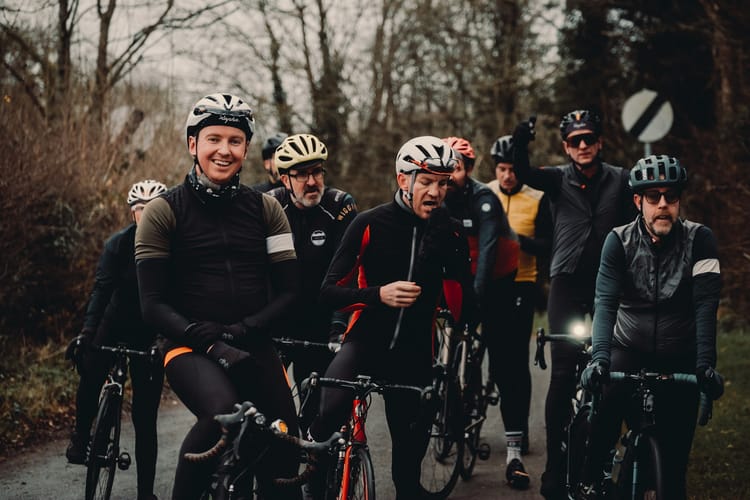

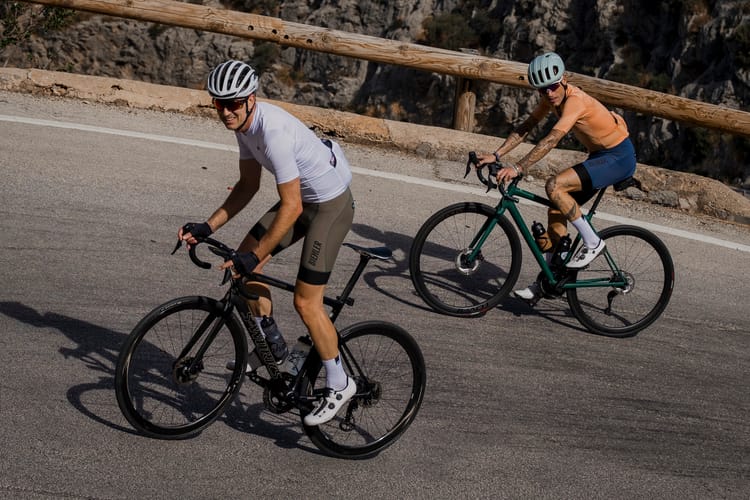
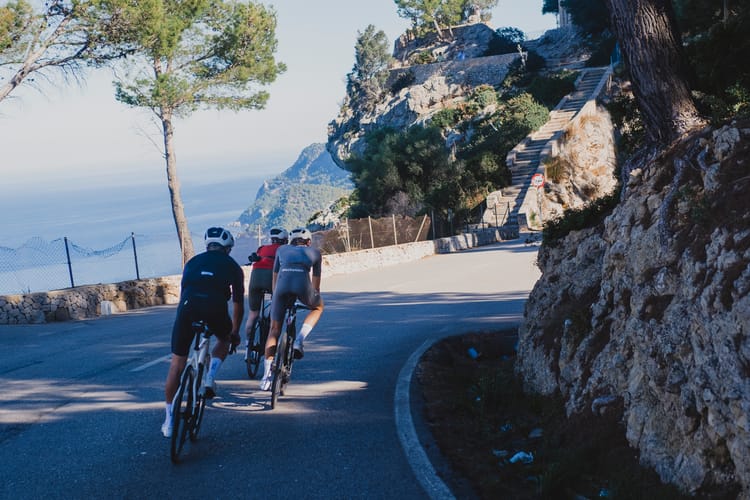
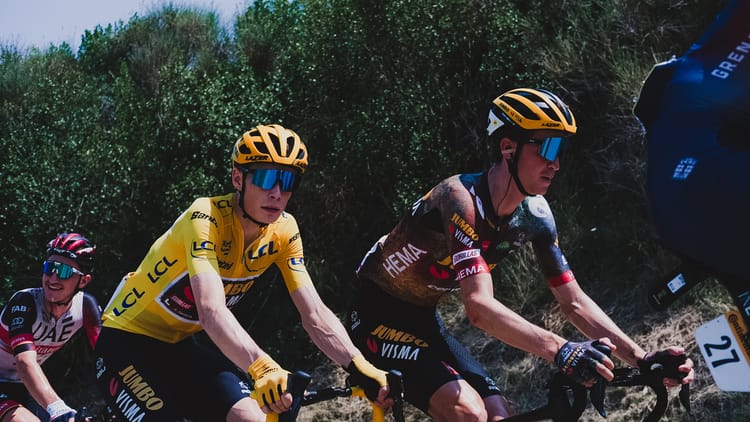
Member discussion